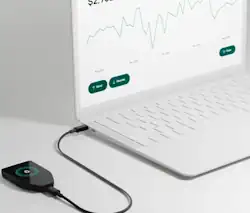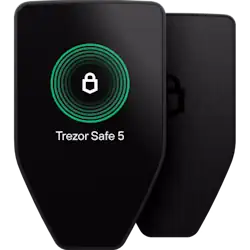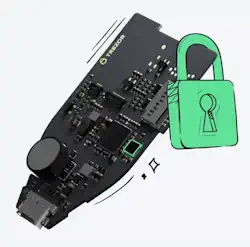
In this post I will discuss why you SHOULD secure your cryptocurrency with the Trezor hardware wallet. This beginner-friendly guide explains how Trezor works, why self-custody matters, and how to secure your coins for good.
You’ll learn why a Trezor hardware wallet is the safer choice to keeping your crypto on an exchange or mobile wallet.
Also, discover setup tips, common questions, and best practices for true self-custody, how Trezor keeps your private keys safe, supports 1,000s of coins, and why you should move beyond exchanges,
By the way, if you are like me and have been in crypto some time, then you will
already have a Trezor Hardware Wallet (or a Ledger hardware wallet)
This post is aimed at readers between Beginner and Intermediate:
- You know what crypto is and maybe own a little already
- You’ve likely kept it on an exchange or mobile wallet
- You aren’t fully convinced you need a hardware wallet yet
- You appreciate clear explanations, not overly technical jargon
So you finally dipped your toes into crypto.
Maybe you bought Bitcoin on Coinbase, grabbed some Ethereum on Binance, or received a bit of USDT from a friend.
You watched the price move up and down, maybe cashed out once or twice — but now the question lingers:
Where should I actually store my crypto long-term?
If your answer is “well… it’s sitting on an exchange”, then you’re not alone. Most new crypto users keep everything online — because it feels familiar. Exchanges look like bank apps, mobile wallets are effortless, and the idea of “self-custody” sounds intimidating.
But here’s the truth:
If you don’t control your keys, you don’t control your crypto. You’re not the owner — you’re just borrowing access.
This is where hardware wallets like Trezor come in. They’re not just tools for hardcore crypto nerds anymore. They’re approachable, polished, and designed for everyday users who simply want to keep their coins safe without overthinking it.
By the end of this guide, you’ll walk away understanding:
✔️ What a hardware wallet actually does (in normal English)
✔️ Why leaving coins on an exchange is riskier than most people realise
✔️ How Trezor works — and how much effort it really takes to set up
✔️ What happens if you lose it (don’t worry, you won’t lose everything)
✔️ And most importantly — how to decide if now is the right time to upgrade your security
Let’s make crypto safety… simple.
What Is a Hardware Wallet — And Why Do People Recommend It So Much?
Most people picture a USB stick-looking gadget when they hear “hardware wallet”.
And they’re not wrong — Trezor devices do look a bit like compact key fobs or digital car keys.
But here’s the important distinction:
| Storage Method | Who Holds the Private Keys? | Risk Level |
|---|---|---|
| Exchange (Coinbase, Binance, etc.) | They do, not you | Medium to high |
| Software wallet (Metamask, Trust Wallet) | You hold them, but they’re stored on your phone/computer | Lower, but still hackable |
| Hardware wallet (Trezor) | You control them offline, on a secure device | Safest option for individuals |
Your private key is what proves ownership of your crypto on the blockchain. If someone gets your key — game over, they get your funds. If you lose your key — same problem.

A Trezor Hardware Wallet solves both issues by:
✅ Generating your private key offline so it’s never exposed to the internet
✅ Storing it inside a secure chip that can’t be copied or retrieved by software
✅ Letting you make transactions safely without revealing your key
You plug it in when you want to send, then unplug it and walk away.
Think of it like banking with a vault keycard instead of a password.
Why Keeping Crypto on an Exchange Feels Safe — But Isn’t
Let’s be honest — exchanges are convenient. You can check your balance, buy coins, sell coins, and move on with your day. That’s what they’re built for.
But here’s the issue: an exchange is not a wallet. It’s a temporary parking lot. And like any parking lot…
🚨 Your car is safe… until it isn’t.
We’ve seen enough headlines to know how this story goes:
- FTX collapse — Users lost billions overnight
- BlockFi, Celsius, Voyager — all froze withdrawals
- Mt. Gox hack — Still unresolved 10 years later
Even good exchanges can be vulnerable to hacks, government seizures, or sudden “maintenance freezes.”
If you only hold small spending amounts — fine. But if your crypto is meant to be savings, long-term investment, or “never sell” stack…
📌 It deserves better protection than an exchange login.
So, What Makes Trezor Stand Out From Other Hardware Wallets?
There are a few popular hardware wallets out there (Ledger, Keystone, Coldcard), but Trezor is often the most beginner-friendly — here’s why:
| Feature | Trezor | Ledger | Others |
|---|---|---|---|
| Open-source firmware | ✅ Transparent security | ❌ Closed-source | Varies |
| Easy interface via Trezor Suite | ✅ Very intuitive | ✅ Good | Often complex |
| Supports 9,000+ coins/tokens | ✅ | ✅ | Depends |
| No forced account creation or email signup | ✅ | ❌ Often required | Varies |
| Affordable entry models | ✅ Model One starts ~€69 | ✅ Similar | Some expensive |
But most importantly: Trezor is designed so even non-technical users can set it up in 10–15 minutes.
How Setting Up a Trezor Hardware Wallet Actually Works (Step-by-Step Overview)
Step 1 — Buy your device from an authorised store

Only ever order from trezor.io or official partners.
Never buy used or opened hardware wallets.
Step 2 — Plug it in and install Trezor Suite
This is the desktop/mobile app that helps you manage your coins. Think “banking dashboard”, but offline-first.
Step 3 — Create your PIN
This protects your device if someone physically steals it.
Step 4 — Write down your recovery seed
This is a 12 or 24-word list generated on-screen. It’s the master password to your crypto — and the only way to recover funds if your device is lost or broken.
Step 5 — Transfer funds from exchange to Trezor
You generate a receive address, send your coins to it — and done. Safe.
But What If I Lose My Trezor Hardware Wallet?
Great question — and the one that stops most people from switching.
Here’s the answer:
If you lose your Trezor but still have your 12/24-word backup phrase, you can restore your wallet on any Trezor (or compatible wallet).
So losing the device is annoying.
Losing your backup phrase is catastrophic.
Which brings us to…
Where to Store Your Recovery Phrase (And How to Not Screw This Up)
❌ Don’t take a photo
❌ Don’t store it in Google Drive, Notes apps or email
✅ Write it by hand on paper — or better yet, metal backup plates
✅ Store it somewhere fireproof, waterproof, far away from your device
Some people even make two copies stored in different locations (one at home, one at parents’ house or safe deposit box).
It sounds dramatic — but this phrase literally controls your money.
Treat it like the deed to your house or title to your car.
Trezor Hardware Wallet Model Comparison — Which One Should You Get?
| Model | Best For | Screen | Secure Chip | Price |
|---|---|---|---|---|
| Trezor Model One | Budget users / BTC & ETH holders | Small text screen | Standard | ~€69 |
| Trezor Safe 3 | Modern all-rounder | OLED display | Secure Element (EAL6+) | ~€79 |
| Trezor Safe 5 | Touchscreen & premium feel | Full color touch | Secure Element + haptics | ~€129 |
Recommendation: If you want maximum simplicity and longevity — Trezor Safe 3 is the best sweet spot.
Frequently Asked Questions — Answered Simply
Can someone hack my Trezor hardware wallet remotely?
Almost impossible. Your keys never leave the device, and transactions must be physically confirmed by pressing buttons on the device.
How many coins can I store?
Unlimited — as many as you want. The device doesn’t hold the coins; it holds the key that allows access to them on the blockchain.
Can I use my Trezor hardware wallet with MetaMask?
Yes! You can connect Trezor to MetaMask and still interact with DeFi, NFTs, or dApps — but with your keys safely stored offline.
What if Trezor goes out of business?
No problem. Your recovery phrase follows open standards (BIP39).
You can restore your wallet on other compatible hardware/software wallets.
When Should You Finally Make the Switch?
Only you can decide when you’re ready to move from convenience to control — but here are strong signals:
✅ Your crypto stack is now more than a “fun experiment”
✅ You plan to hold long-term (HODL life)
✅ You’d be devastated if your exchange account was frozen tomorrow
✅ You want peace of mind without daily stress
If any of those are true — it’s time to take ownership.
Final Thoughts: Owning Crypto Means Owning Your Keys
You wouldn’t leave your life savings in someone else’s PayPal account. Yet that’s exactly what millions of crypto holders unknowingly do every day when they trust exchanges to store their assets.
A Trezor hardware wallet is your way of saying:
“I’m not just speculating. I’m owning this.”
It’s not just more secure — it feels empowering. You don’t depend on luck… or trust… or someone else’s servers. You take control.
So don’t wait for a “crypto disaster” headline to become your wake-up call. Move your crypto to safety while everything is fine.
Your future self will thank you.
*This post may contain clickable affiliate links*
